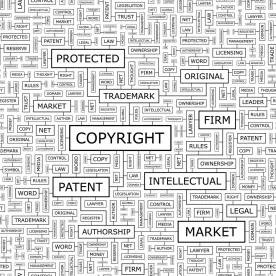Last year, the Biden Administration announced its support for a waiver of intellectual property rights to help fight the COVID-19 pandemic. Recently, the European Union, India, South Africa, and the United States have reached a tentative compromise on a proposed TRIPS waiver of intellectual property (IP) rights, meaning we are quickly approaching a collective refrain enforcing intellectual property rights related to fighting COVID by these countries within their borders. Ultimately, it is the opinion of Wen Xie, Partner at Global IP Counselors, that any attempt to waive IP will be ineffective in its application. COVID patents will probably still be enforced in the US nonetheless, and the TRIPs Waiver only destabilizes the innovative ecosystem by rendering intellectual property rights unpredictable on a global scale. The NLR asks Xie to go into more depth about the various legal questions raised by the prospective waiver.
1. NLR: Can you explain the TRIPS agreement considering the COVID pandemic? How will a non-uniform enforcement of the waiver affect companies and what should they know about it?
XIE: Right now we are working off of a leaked WTO ‘solution’ for waiving COVID patents1; nothing has been formalized or voted on at this stage. The document basically says that Member countries have the option to make, use, sell or import COVID-19 vaccines without the authorization of the patent holder, which is saying that the vaccine makers can’t (cannot) raise a big fuss and take anyone to court on the grounds that their patents are being infringed. One of the most important things to note is that there is a great degree of optionality to this proposal – the proposal repeatedly states that Member countries “may” do any of the actions that are permitted if this proposal ends up being adopted.
This means that the implementation of this TRIPS waiver will look different from country to country depending on how much they want to do in terms of waiving patent rights within their national jurisdictions. Countries that fervently advocated for this measure (namely India and South Africa2) will probably go to the whole extent of what they are allowed to do. They might even build manufacturing facilities for mRNA vaccines that are right now protected by the Pfizer and Moderna patents. I don’t the US or Europe will go this far, if at all. The US might choose to not waive COVID-19 vaccine patents in the US at all because the laws governing the conferring of patent rights is under Title 35 of the United States Code and has nothing to do with TRIPS or any other international agreement. Any kind of implementation of this waiver brokered under the President’s Treaty Powers will ultimately need legislative sanction. It’s highly doubtful the Administration will end up pushing for something like that.
What seems to be really happening with this so-called “waiver” is a multi-lateral agreement that some developing nations are going to not enforce COVID vaccine patents within their borders and the WTO is not going to retaliate. It’s sort of like the US and Europe are saying to the countries that pushed for this, “Go ahead, you’re off the hook.” But since the tentative agreement allows Member countries the option to implement the provisions, the US will probably not choose to adopt it within its borders.
2. Given the global economic and human toll of the COVID pandemic, why is maintaining intellectual property rights for COVID-19 treatments important?
In the field of biomedical sciences, the period of exclusivity granted by patents is critical for recouping costs used for reinvestment into the next round of research and development. The major pharma companies spend as much as 25% of their revenue on R&D. Here’s a breakdown of some of the major companies in terms of their R&D spending in 2020:
- Johnson & Johnson (14.8% of revenue)3
- Roche (24.1% of revenue)4
- Novartis (18.5% of revenue)5
- Merck (28.3% of revenue)6
- Pfizer (22.4% of revenue)7
- AstraZeneca (22% of revenue)8
- Eli Lilly (24.7% of revenue).9
Compare that to Apple which spent 5.99% of its revenue on R&D in 2021, and Microsoft which spent 12.32%.10
The vaccine makers are for-profit companies whether we like it or not. Pfizer, Moderna, and J&J each received governmental funding through Operation Warp Speed to incentivize them to develop the COVID vaccines in the time span that it occurred. We must examine how much suppressing IP and thereby suppressing the investment incentive to continue ongoing innovation will end up costing us as a society.
3. What are the legal deficiencies of the TRIPS agreement?
One of the truly bizarre aspects of the TRIPS “waiver” is that there is no such thing as a “TRIPS patent.” All patents have national jurisdictions. US patents are issued by the United States Patent and Trademark Office under Title 35. The same goes for the process of filing for patents at all the other national patent offices – TRIPS plays no role in the whole process. In terms of legal deficiencies, we should be rigorously examining what kind of jurisdiction the TRIPS Agreement will have to render patents unenforceable or useless.
When it comes to patent rights, the TRIPS Agreement obligates its signatories to comply with the Paris Convention which is a treaty that was signed in 1883. The Paris Convention was one of the first attempts to harmonize the patent system worldwide. The reason for doing this was to create a system for claiming priority and to harmonize the standards of patentability across nations so that applications can claim priority and get the benefit of an earlier priority date of a related application that was filed in a different country. Priority dates are used to determine the scope of the prior art that can be used against the application when examining for novelty and obviousness, which is why these dates are important.
For example, the US and Japan are both signatories to the Paris Convention treaty. An applicant filing at the USPTO can claim priority to an earlier-filed Japanese patent application that was filed at the Japan Patent Office under the Paris Convention. And the same can occur in reverse.
What authority does the TRIPS Agreement have in terms of patents? I think TRIPS can possibly do away with the system of priority claiming under the Paris Convention and subject patents to reexamination as they lose their priority dates. But neither the TRIPS Agreement nor the Paris Convention should have anything to do with domestic patent applications that are filed directly with the national patent offices. And more likely than not, the COVID vaccine patents were filed directly at domestic patent offices around the world, which should be completely beyond the jurisdiction of the TRIPS Agreement or any other international agreement on patent rights. The priority system is mostly utilized by companies who are constrained by their IP budget and does not yet have the budget to file in several patent offices internationally at once, so they stagger these filings over time and claim priority to the original patent application. I doubt that this is what Pfizer, Moderna, and J&J did with the COVID vaccine patents.
4. What are the practical deficiencies of the TRIPS agreement related to COVID?
The TRIPS waiver probably won’t help the developing nations that much in terms of getting access to cheaper COVID vaccines. Practically speaking, developing nations could have always ignored Pfizer and Moderna’s patents for their vaccines without the need for a worldwide agreement to render patents useless. Again, patents have national jurisdiction. So, India can just ignore Pfizer’s Indian patent, for example. A lot of countries have fallen short of a robust assertion of patent rights in their domestic courts as agreed under the international treaties without facing WTO sanctions or penalties (see China).11 So these countries could have unilaterally treated patents however they wanted, which is already what has been happening for a long time. It is very unclear why such a drastic, coordinated course is necessary and why the US needs to be complicit in destabilizing the innovative landscape for IP stakeholders.
Another issue is that say a developing nation decides to build manufacturing facilities to produce mRNA vaccines. Waiving patent rights does not provide them with access to manufacturing processes, test data, medical formulas, cell lines, and other critical data that they will need. So waiving IP rights still does effectively very little in terms of improving developing nations’ access to vaccines, nor will it enhance their ability to make or produce these vaccines on their own.
5. What are the potential long-term impacts of the TRIPS agreement related to COVID, and how should companies prepare?
Both the TRIPS Agreement and the Paris Convention have provisions obligating its signatories to recognize the domestic patent rights of foreign entities and to receive the same treatment as if the patents were owned by nationals. I think this is what it really comes down to – the TRIPS waiver is meant to give free rein to some countries who do not want to recognize the patent rights of foreign companies over products that they want more of. If this proposal is adopted, the WTO will be a collection of nations agreeing to no longer recognize that foreign entities enjoy the same property rights as nationals, which is a dangerous precedent.
In the US, we’ve never had to make a law to say foreigners can enjoy the same property rights as nationals - that was just a given under the Equal Protection Clause which entitles both citizens and aliens to the equal protection of the laws of the State in which they reside. You need sanctions in the US to seize a Russian oligarch’s yacht.
Intellectual property may not physical or tangible, but it is a right. Patentees sought out this right in reliance on the government’s promise that it would be protected in return for a full, enabling disclosure of their inventions. There were so many alternatives that could provide developing nations with greater access to vaccines, such as purchasing the vaccines directly for them. But instead, the government has effectively reneged on a promise, and the end result is that developing nations in need of vaccines will still face the same hardships and barriers as they did before.
The opinions expressed herein are those exclusively of Wen Xie and any commentary should be directed to the interviewee at E‐mail: wxie@giplaw.com.
[1] https://www.ipwatchdog.com/wp-content/uploads/2022/03/4d79fc6c70.pdf
[2]https://msfaccess.org/india-and-south-africa-proposal-wto-waiver-ip-protections-covid-19-related-medical-technologies
[3] Johnson & Johnson. "2020 Annual Report,” Page 3.
[4] Roche. "Roche Holdings, Inc. Annual Report 2020" Pages 6 and 12.
[5] Novartis. "Annual Review 2020," Page 29.
[6] Merck. "Merck Announces Fourth-Quarter and Full-Year 2020 Financial Results."
[7] Pfizer. "Annual Review 2020.” Page 62.
[8] AstraZeneca PLC. "Full-year 2020 results," Pages 1-2.
[9] Eli Lilly. "Lilly Reports Strong Fourth-Quarter and Full-Year 2020 Financial Results."
[10] https://www.calcbench.com/blog/post/676274365248274432/charting-big-rd-spenders




 />i
/>i

